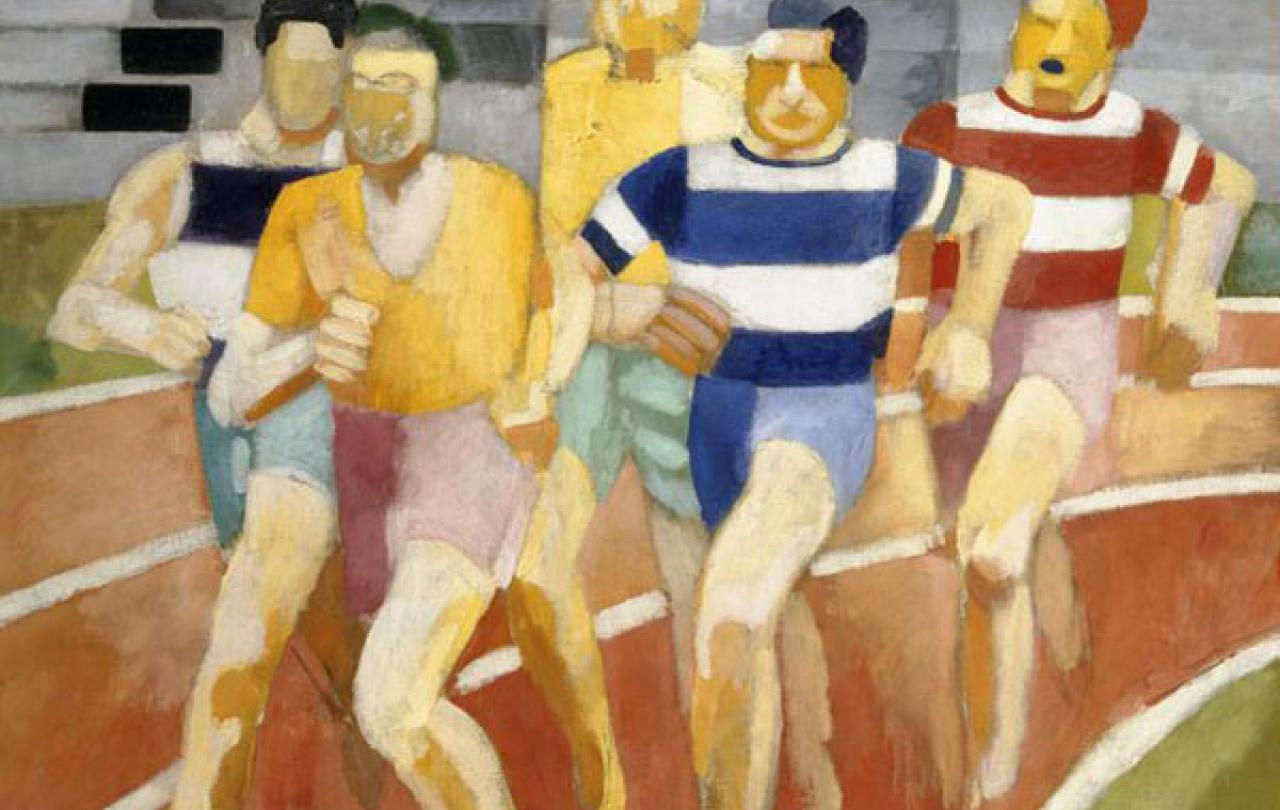While not focusing specifically on religion, as did the Aga Khan Centre exhibition, exhibitions organised for the Paris 2024 Olympics are also exploring stories of sport as culture, impacting on gender, class, race, representation, celebrity, science, and art.
En Jeu! Artists and Sport (1870-1930) at Musée Marmottan Monet, Paris, builds up a portrait of the society of the second half of the nineteenth century, which gradually took pleasure in taking advantage of its free time to pursue sporting and leisure activities on land or water. Ranging from Impressionism to Cubism, the exhibition shows how sport and sportspeople were made into icons of modernity and the avant-garde. It also explores the ethical challenges and aesthetic aspects of how sports were perceived by artists such as Claude Monet and Edgar Degas and examines the metaphorical meanings of the heroic figure of the artist as a sportsperson, characterized by determination, stamina and a form of resistance.
The changing social codes of sporting circles, where venues became theatres of physical prowess, are also examined. Sport metamorphosed into a practice of effort, competition, and record-setting, sanctioned by artists in works that reinforced the cult of sporting heroes, relayed by the press. Artists like Henri de Toulouse-Lautrec and Paul Signac identified with the qualities of determination and endurance of these sportspeople who sought to surpass themselves.
Paris 1924: Sport, Art and the Body at Fitzwilliam Museum in Cambridge explores how the modernist culture of Paris shaped the future of sport and the Olympic Games as we know and love it today. The exhibition looks at a pivotal moment when traditions and trailblazers collided, fusing the Olympics’ classical legacy with the European avant-garde spirit. Paris 1924 was a breakthrough that forever changed attitudes towards sporting achievement and celebrity, as well as body image and identity, nationalism and class, race and gender.
The fusion of modern Parisian cultural style with the Olympics’ classical inheritance gave the event a striking visual impact. Curators Caroline Vout, Professor of Classics, University of Cambridge and Professor Chris Young, Head of the School of Arts and Humanities University of Cambridge say: “The exhibition explores the look and feel of Paris 1924 as trailblazing and traditional, local and global, classical and contemporary. It brings together painting, sculpture, film, fashion, photography, posters and letters.”
The exhibition also highlights the extraordinary achievements of the Cambridge University students who won no fewer than 11 Olympic medals for Great Britain that year, including the sprinter Harold Abrahams whose story inspired the award-winning film Chariots of Fire.





